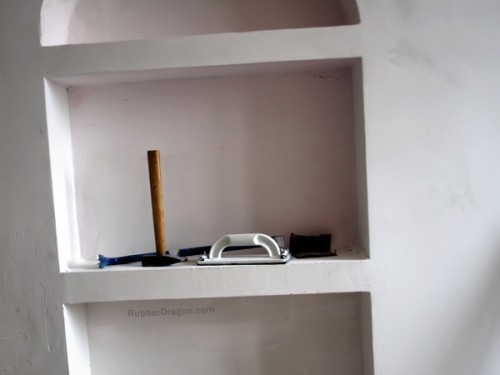
For example, I needed a new bookcase recently. I didn’t need anything fancy, just something to tuck in a closet to give me a little extra shelving. I could have made my own. I have the skills, tools, and knowledge to do so. However, I was able to find a perfectly serviceable unit at Target for $20. There is no way I could have made a bookcase for that amount of money. Just the wood alone would have cost more than that and that’s before I bought stain, screws/nails, etc. I bought the manufactured unit and had it assembled and in my closet that afternoon. Had I made it, it would have taken at least a week with all of the other things I have going on right now.
Sure, a handmade unit would have been nice. It would have looked a bit better than the store bought unit and I could have customized the size. But for the job I needed it to do, the store bought unit was just fine. I also needed the extra shelving fairly quickly. Having it in one day was preferable to waiting a week. Plus, buying the unit freed up a lot of time that would have been spent making a unit and, right now, time is at a premium for me. Buying rather than making saved me both money and time.
This is often the case, particularly when you don’t need to be super picky about the item you’re buying. Modern manufacturing processes and economies of scale simply make it possible to mass produce something for less than an individual can make the same item. This wasn’t the case in our grandparent’s day, which is why they so often made things and managed to save money. There simply weren’t any cheap goods to buy. Now, though, times are different and buying is usually cheaper.
It is possible to save money by making something if you already have the materials on hand, or if you can get the materials for free. If you’re able to make something out of scrap/trash, if you can find someone to give you the materials you need, or if you can scrounge up materials from somewhere else (think dumpster diving or yard sales) you can likely make something for less than the cost of buying new. However, if you have to go out and buy new materials, you might as well just go buy the item you need (if saving money is your main goal).
That’s not to say that it’s pointless to make your own stuff. Far from it. When you make your own, you can customize the item however you want it. You get the satisfaction of a job well done. The thing you make might be better/more functional/more durable than a store bought item. For some people, making things is a hobby that relaxes them, is fun, and/or provides a side income. There are plenty of reasons to make your own items but if saving money is the goal, you have to think carefully.
If you’re trying to save money by making your own items, figure out how much it will cost to get the materials/tools you need, as well as how much time it will take you to complete the project (your time is worth something, too). If you’ll have to learn some new skills to complete the project, factor your learning curve into your estimate. After you’ve got a figure in mind, look at how much it will cost to simply buy the item. By comparing the two numbers you’ll know whether making your own is a good deal or not.
(Photo courtesy of Rubber Dragon)

Jennifer Derrick is a freelance writer, novelist and children’s book author. When she’s not writing Jennifer enjoys running marathons, playing tennis, boardgames and reading pretty much everything she can get her hands on. You can learn more about Jennifer at: https://jenniferderrick.com/.
Comments